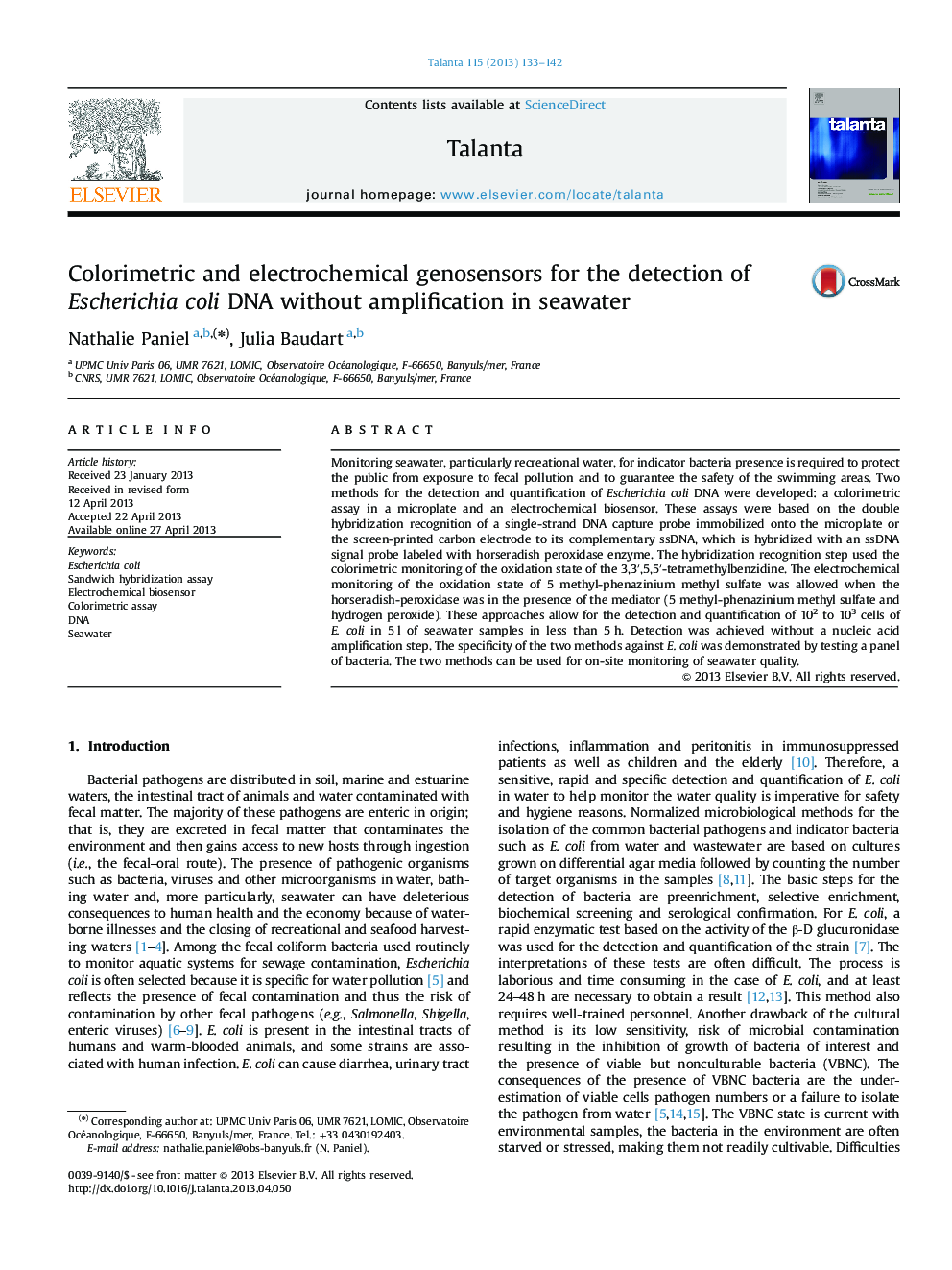| Article ID | Journal | Published Year | Pages | File Type |
|---|---|---|---|---|
| 7681652 | Talanta | 2013 | 10 Pages |
Abstract
Monitoring seawater, particularly recreational water, for indicator bacteria presence is required to protect the public from exposure to fecal pollution and to guarantee the safety of the swimming areas. Two methods for the detection and quantification of Escherichia coli DNA were developed: a colorimetric assay in a microplate and an electrochemical biosensor. These assays were based on the double hybridization recognition of a single-strand DNA capture probe immobilized onto the microplate or the screen-printed carbon electrode to its complementary ssDNA, which is hybridized with an ssDNA signal probe labeled with horseradish peroxidase enzyme. The hybridization recognition step used the colorimetric monitoring of the oxidation state of the 3,3â²,5,5â²-tetramethylbenzidine. The electrochemical monitoring of the oxidation state of 5 methyl-phenazinium methyl sulfate was allowed when the horseradish-peroxidase was in the presence of the mediator (5 methyl-phenazinium methyl sulfate and hydrogen peroxide). These approaches allow for the detection and quantification of 102 to 103 cells of E. coli in 5Â l of seawater samples in less than 5Â h. Detection was achieved without a nucleic acid amplification step. The specificity of the two methods against E. coli was demonstrated by testing a panel of bacteria. The two methods can be used for on-site monitoring of seawater quality.
Keywords
Related Topics
Physical Sciences and Engineering
Chemistry
Analytical Chemistry
Authors
Nathalie Paniel, Julia Baudart,
